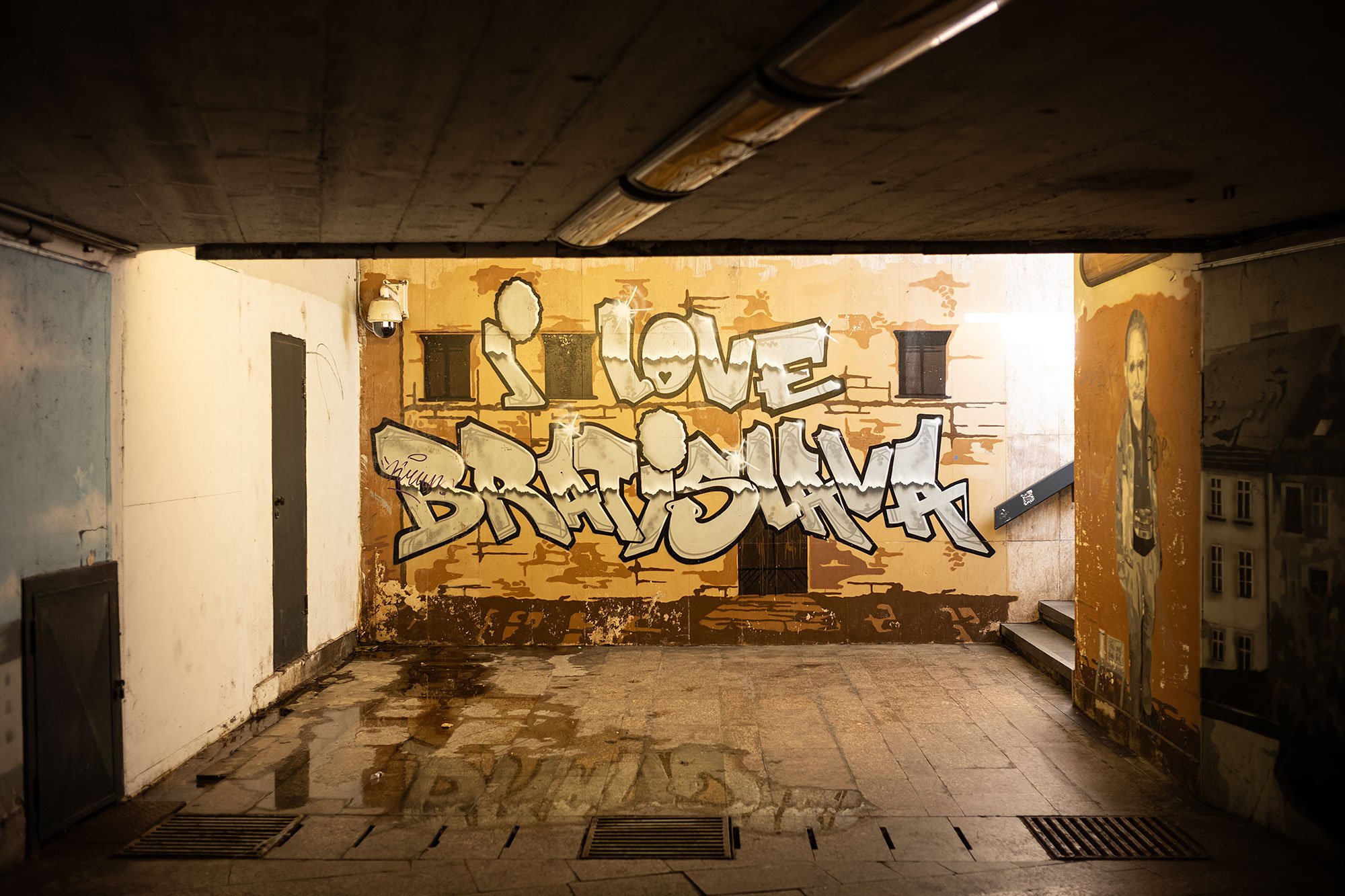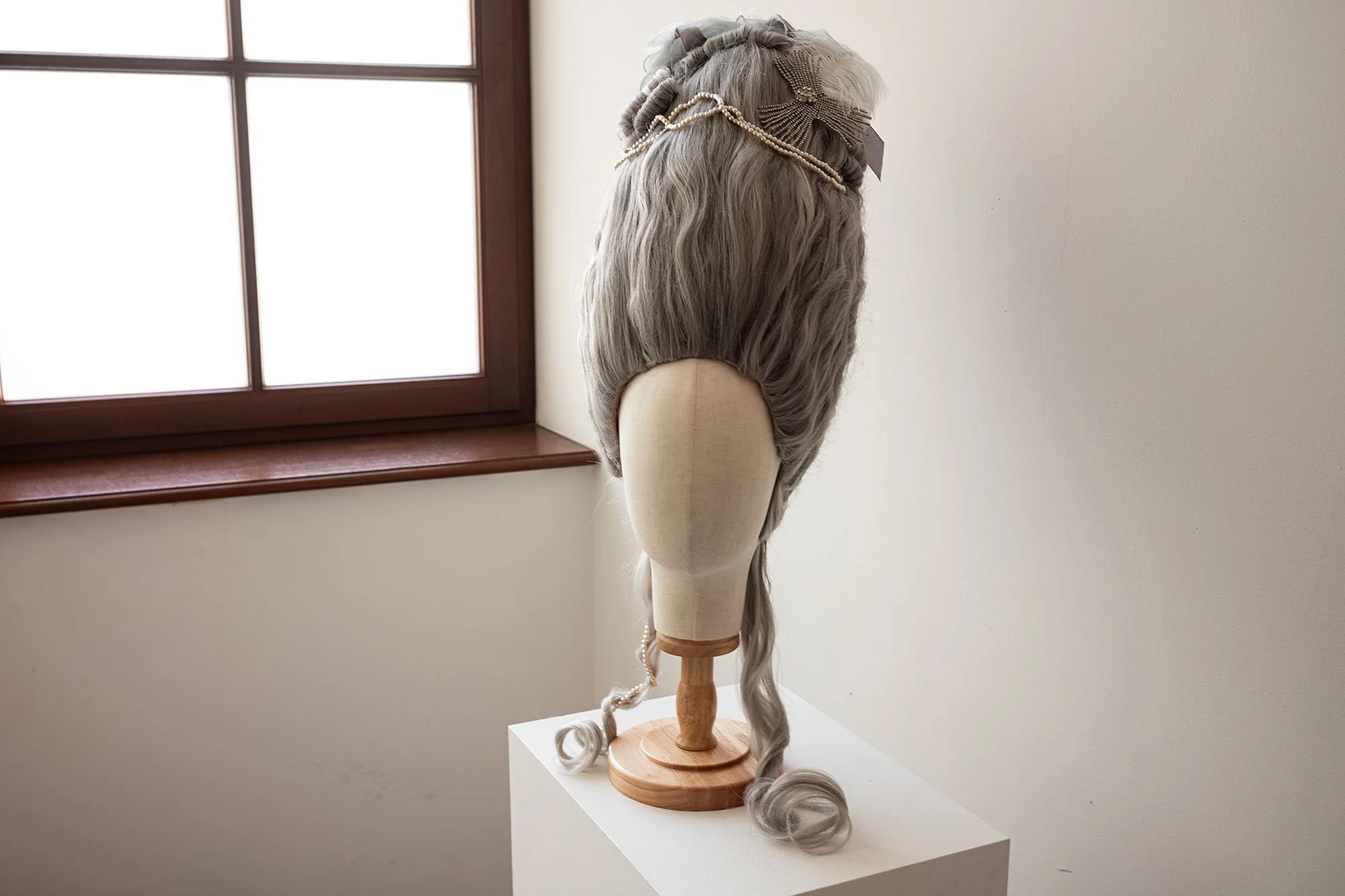A day in Bratislava: the Castle, the Blue Church, and the UFO Tower.
I’ve set aside the day to tour Bratislava itself, though I get to a late start.
The night before I was up until three in the morning watching Thunderbolts*. I had told myself I’d start watching and finish it later in the day. Famous last words.
I decide to start with lunch at OMA fine foods & wine, a place I’ve wanted to try since I arrived in Slovakia. I walk out of my apartment and turn out to the edge of the old town to walk towards the neighborhood of Slavin.
I stop in the post office en route to mail some postcards. it’s a beautiful building with a fantastic glass ceililng. There’s no line and the postal worker happily sells me some stamps, collecting the cards from me after I’ve finished affixing them.
I continue down Námestie SNP and turn right at the Old Cathedral of Saint John of Matha and Saint Felix of Valois. I approach a wide avenue and follow it to the west until I find a tunnel to cross into Slavin. A huge tag professes love for the city.
Unfortunately, lunch service has yet to begin. I’m asked to come back in 45 minutes. I decide to head to the castle first, climbing up a set of back stairs to find myself soon in the courtyard. I pay the entrance fee and add on the exhibit of Marie Antoinette’s clothes.
The interior of the castle boasts a number of exhibitions, none of which really detail the furnishings of the palace itself. I wind my way up and down various staircases, surprising myself with discoveries that feel hidden behind exhibits. One set of stairs leads up to the top of a tower with sweeping views of the city and river.
The castle rises 80 meters above the Danube, dating back to the 13th century. Though it was destroyed by fire in 1811, 20th century reconstruction efforts have brought it back to its current glory.
On the first floor I admire the Baroque retable of the main altar from the Church of St. Elizabeth of Hungary in Dravce. It’s laid at an angle with a set of stairs in front of it to get a better view. It’s an interesting way in which to display such a piece, but I appreciate it for how much closer you can get to the upper sections.
From the upper floors there are views out over the Danube and the parliament building of Slovakia. It’s nice to have the respite of outdoor views before diving once again into the galleries.
Heading back through the galleries of the museum I wander past a display of porcelain in a darkened room. It’s a fantastic way to display the artefacts and I find myself drawn into the brightly-lit settings.
Just past there’s an exhibition that guestures towards modern-day Slovakia. I don’t know why but I’m particularly tickled by a hockey player mannequin wearing a jersey with the Slovak national emblem. It feels like a foosball figure brought to life.
I walk back through through the Baroque residences, mostly empty save for the art on the walls and in the corners, to the chapel, which is mostly used as a concert venue.
Searching out the other corners of the castle I head to an exhibit of Christian Motifs in Fine Art Collections of the Slovak National Museum – Museum of History.
The works displayed date from the 14th to the early 20th century, depicting the lives of saints, stories from the Old and New Testaments, and various representations of the Virgin Mary.
From here I climb to the top of the Crown tower, the oldest standing building of the Castle. Built in the 13th century as part of an older castle, ti was incorporated into the current building in the 15th century andd named after the Hungarian coronation jewels once kept here. It offers magestic views of the Danube and the town below.
Leaving the main castle, I cross the courtyard to a smaller gallery space housing Marie Antoinette: from celebration to tragedy, an exhibit of historical costumes including five exact replicas of 18th-century creations presented in period setting.
The Marie Antoinette exhibit is small, but I love fashion and really enjoy the exhibition and the way in which it’s been arranged.
Leaving the castle I walk the grounds. A bronze statue of Saints Cyril, Methodius, and Gorazd dominates one of the lawns. Known as apostles to the Slavs, Cyril and Methodius created of the Glagolitic alphabet, a forerunner of Cyrillic. Gorazd was one of their pupils.
From there I walk to the gardens, exiting from the far side to come back around the castle to walk to the edge of the lawns to look out from the cliffs to the Old Town.
I decide to treat myself to a lunch at Bistronomy, a highly-ranked restaurant that looks on the map to be just at the base of the castle. I walk towards the river and begin descending down along the outer castle walls.
Unfortunately, the way there less than straightforward than I imagine due to construction at the base of the castle. I follow a path that runs along the river back towards the old town and find myself in front of St. Martin's Cathedral and take the opportunity to stop in.
Marking the western edge of the old town, St. Martin’s Cathedral is the largest and one of the oldest churches in Bratislava, known for being the coronation church of the Kingdom of Hungary from 1563 to 1830.
I enter the church and pay the five Euros extra to see the choir, treasury, and crypt, mainly to be able to climb to the organ for the views of the church itself. The vantage point does not disappoint. And neither do the crypts as I appreciate the hand-painted letters that adorn the graves.
From the cathedral I follow the river to a reach the development in which Bistronomy is located. The waiter tells me that it’s a shortened a la carte menu for lunch, but that’s fine; I’m not terribly hungry. And yet I order the soup (dumplings with carp from nearby fishery, marinated peppers, kimchi by local Rodkva Ferments), a starter (whipped traditional sheep cheese “bryndza”, roasted peppers from Beladice farm, organic tomato relish), and sturgeon for my main.
He asks what I’d like to drink. I tell him regular water is fine, then change my mind. I order a local sparking wine.
The food is delicious, but I can barely finish it. The waiter returns and asks if I’d like dessert. I would love to but I can’t.
I head home for a nap, walking along the river until I reach the old town and then turning inland to follow now-familiar streets back to my home.
In the afternoon I want to visit the Church of St. Elizabeth, or Blue Church, but it doesn’t open until later. To kill time I stop for a coffee at café suvenir, a shop just outside the Old Town selling local art alongside coffee drinks. I sit and write postcards, and then browse the books and other items on display before taking my leave.
At the church I’m told it’s closing. Google has led me astray. I ask if I can stop in for a second and am told no. I can return in 45 minutes when mass starts to have a peek. And then a man comes out and tells me I can enter through the front door. I walk back around to the front and a man unlocks the gate and invites us in.
The church was built in 1908–1913 in the Hungarian Art Nouveau style. Initially part of the neighboring high school it served as the school chapel.
It’s a beautiful church. Stepping inside, it feels like stepping into a fairy tale. Standing before the altar, I picture happy celebrations being held within.
Afterwards, I stop at Múza v šálke for dessert and a macchiato. Its high rating on Google piques my interest and I enjoy a banoffee while sitting by the sidewalk, writing the final few postcards. of my stay.
From the cafe I walk across Starý most to the Sad Janka Kráľa, a city park that runs along the Danube. Below, people sunbathe on the grass. My destination is the UFO Tower, built over the bridge that runs past the castle for its sweeping views of the city.
To get to the tower I walk along the Danube, admiring the buildings across the river. It’s like being in New Jersey, looking across the Hudson at New York. You can’t really admire the skyline unless you’re outside the city.
Nearing the bridge over which the UFO tower presides, I watch a river boat reach the end of its cruise and slowly turn to head back to its berth. It’s oddly relaxing, standing in the shade of a tree to watch this long vessel slowly turn itself, the act itself a slow rotation upon the water.
At the tower I pay my entrance fee and step into the elevator that takes me to the restaurant and bar level. A woman takes my ticket and directs me to a nondescript door that opens to a staircase leading up to the outdoor observation platform.
It’s windy; a slight howling can be heard as I step outside. The view is awesome, the city beautiful in the late afternoon light. I linger, not wanting to leave. It’d be great to stay for the sunset but I have an appointment at 20h30 and want to get home to do laundry in time for it to dry by the morning.
On the observation deck metal hearts sport locks representing people’s love. An older couple arrives to take in the view before heading back downstairs. Her red outfit burns in the golden light of the late afternoon.
I head back downstairs and take the elevator back to earth. The exit bypasses the ticket counter and I have no one to say goodbye to. There’s a walking path on a lower level of the bridge and I follow it back to the old town, the castle signaling the direction to my left.
Back in town it’s relatively quiet. I make my way past the Morový stĺp, (Plague Column) and cross Rybné námestie (Fish Square) before heading to the main street that runs across town.
There’s no one keeping Čumil company when I pass the sculpture and I stop to say hello, and to take his picture before walking the rest of the way home. 🇸🇰






















































































